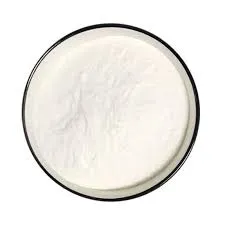
نومبر . 19, 2024 05:28 Back to list
Exploring the Applications and Benefits of HPMC Cellulose in Modern Industries
HPMC Cellulose A Versatile Polymer for Modern Applications
Hydroxypropyl Methylcellulose (HPMC) is a cellulose-derived polymer that has gained significant popularity across various industries due to its unique characteristics and versatility. As a non-ionic, water-soluble polymer, HPMC is utilized in multiple applications ranging from pharmaceuticals and food products to construction and cosmetics. This article will explore the properties, applications, and benefits of HPMC, highlighting why it has become a staple in modern manufacturing processes.
Properties of HPMC
HPMC is derived from cellulose, a natural polymer found in plant cell walls, but with modifications to enhance its functionality. The hydroxypropyl and methyl groups introduced into the cellulose structure allow HPMC to dissolve in cold water, making it an excellent thickening agent and binder. It exhibits rheological properties that allow it to alter the viscosity of solutions without significantly affecting the gelling properties. Furthermore, HPMC is known for its excellent film-forming abilities, which can create protective barriers in various formulations.
One of the standout features of HPMC is its thermal stability and resistance to heat, making it suitable for applications that require exposure to high temperatures. Additionally, it is non-toxic and biodegradable, which adds to its appeal, particularly in eco-conscious markets.
HPMC Cellulose A Versatile Polymer for Modern Applications
The versatility of HPMC has led to its widespread use in numerous fields. In the pharmaceutical industry, HPMC is commonly used as a drug excipient for tablet formulations, providing controlled-release properties and improving the stability of active ingredients. Its ability to form gels and films also makes it a valuable ingredient in ophthalmic solutions and topical creams.
hpmc cellulose

In the food industry, HPMC serves as a thickener, emulsifier, and stabilizer, enhancing the texture and palatability of various products, including sauces, dressings, and dairy items. As a vegetarian alternative to gelatin, HPMC is particularly appealing in the production of vegetarian and vegan food products.
The construction industry benefits from HPMC by utilizing it in dry-mix mortars and plasters. Its water-retention properties improve workability and adhesion, making HPMC an essential ingredient in modern construction materials. It also enhances the durability and integrity of building materials by preventing cracks and improving moisture control.
Cosmetics and personal care products likewise incorporate HPMC for its thickening and emulsifying properties. It is found in lotions, creams, shampoos, and various personal care items, contributing to the overall texture and application of these products.
Benefits of HPMC
The key benefits of HPMC include its ability to improve the texture and stability of formulations, its water retention properties, and its compatibility with various ingredients. Being a non-ionic polymer, it does not interfere with the active ingredients in formulations, making it an ideal choice for a wide range of applications. Furthermore, its biodegradable nature aligns with current sustainability trends, making it an attractive option for manufacturers looking to reduce their environmental impact.
In summary, Hydroxypropyl Methylcellulose is a multifunctional polymer with diverse applications across numerous industries. Its unique properties make it invaluable for improving product performance, enhancing texture, and ensuring stability in formulations. As industries continue to seek efficient and sustainable solutions, HPMC is poised to remain a key ingredient in innovative product development.
-
Versatile Hpmc Uses in Different Industries
NewsJun.19,2025
-
Redispersible Powder's Role in Enhancing Durability of Construction Products
NewsJun.19,2025
-
Hydroxyethyl Cellulose Applications Driving Green Industrial Processes
NewsJun.19,2025
-
Exploring Different Redispersible Polymer Powder
NewsJun.19,2025
-
Choosing the Right Mortar Bonding Agent
NewsJun.19,2025
-
Applications and Significance of China Hpmc in Modern Industries
NewsJun.19,2025







